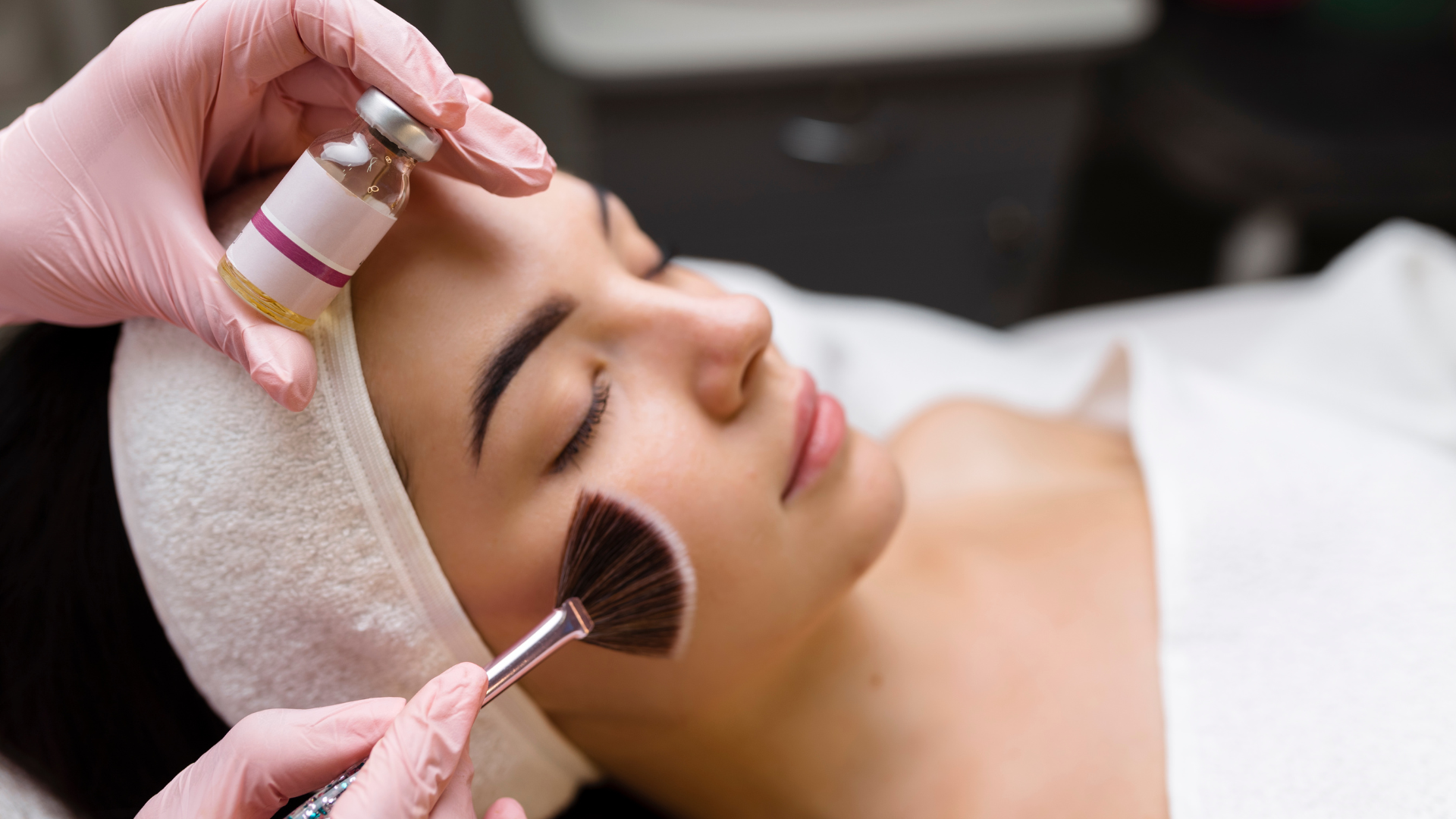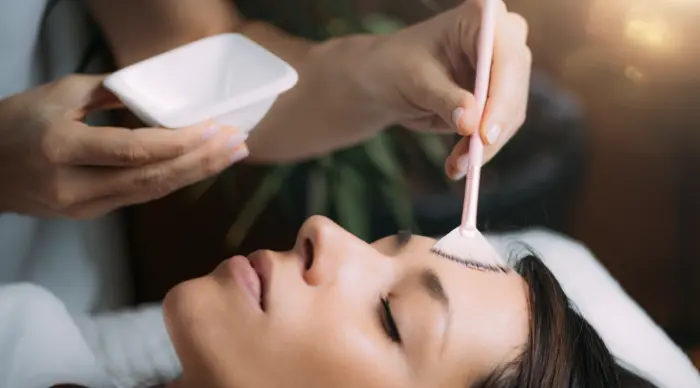Chemical peels are a popular cosmetic treatment, with the American Society of Plastic Surgeons reporting over 3.5 million procedures in 2023 alone. This highlights the widespread appeal and effectiveness of chemical peels in addressing various skin concerns.
Biorepeel, a cutting-edge chemical peel, offers numerous skin benefits by combining multiple active ingredients designed to rejuvenate and refresh the skin. However, like all cosmetic treatments, it can have potential side effects.
In this article, we will explore the possible side effects of Biorepeel, helping you understand what to expect and how to manage any adverse reactions effectively.
Key Takeaways
- Biorepeel causes redness, swelling, peeling, flaking, and dryness. These side effects are common but don’t last long.
- Severe reactions, such as infections, changes in skin color, scars, and allergic reactions, are rare but require quick action.
- Keeping your skin hydrated and protected from the sun helps reduce side effects. Use gentle skincare products as advised.
- If you have severe or lasting problems after a Biorepeel treatment, get help from a doctor immediately.
- Proper care after your treatment makes recovery smoother and keeps the skin looking good.
About: Doctor Medica is your trusted supplier of top-quality dermal fillers, viscosupplements, and more for your medical practice. We offer genuine products from leading brands at the lowest prices in the market. If you’re looking to buy Biorepeel for your practice, contact the Doctor Medica today.

Biorepeel ingredients combine trichloroacetic acid, hydroxy acids, vitamins, amino acids, and Gamma-Amonibutryic Acid (GABA). This unique formulation creates an exclusive biostimulating, revitalizing, and peeling therapy.
As a non-invasive, advanced peel treatment, Biorepeel utilizes a blend of biostimulation and active ingredients. The process employs a two-phase technology. Initially, the skin is prepared, followed by applying a solution that is absorbed before removal. This blend of acids, amino acids, and vitamins aids in exfoliating the skin, enhancing moisture, and boosting collagen production.
Biorepeel can be applied to various areas, including the face, neck, chest, back, and hands. Its strength lies in its ability to address fine lines, wrinkles, age spots, uneven skin texture, and enlarged pores.
Common Side Effects of Biorepeel

- Redness: Mild to moderate redness is a common side effect of Biorepeel. This skin irritation usually subsides within 24-48 hours, indicating that the treatment is actively working on your skin. Patients often experience slight redness immediately after the procedure, but this temporary flushing is not a cause for concern.
- Swelling: Swelling is another frequent side effect. It occurs as the skin reacts to the treatment and typically diminishes within a few days. Right after the procedure, some individuals might notice that their skin appears puffier or feels tender. Although temporary, swelling is part of the natural healing process.
- Peeling: Peeling usually begins within three days after a Biorepeel treatment. This process helps shed old skin cells to reveal fresh, new layers. While seeing skin peel can be alarming, it’s a sign that the treatment is working effectively.
- Flaking: Flaking often appears in the days following the treatment. Light skin shedding indicates renewal and healing, showing that Biorepeel promotes skin cell turnover.
- Dryness: Dryness is a common side effect, with the skin feeling tight and rough, indicating dehydration. Increased skin dryness is a typical outcome after such treatments.
Rare but Serious Side Effects of Biorepeel

- Infections: Infections after a Biorepeel treatment are rare but can be severe, particularly with medium and deep peels. Proper post-treatment care is essential in preventing infections. For individuals with a history of herpes simplex, doctors recommend taking antiviral medication beforehand to prevent outbreaks.
- Pigmentation Changes: Hyperpigmentation (darkening of the skin) or hypopigmentation (lightening of the skin) are rare yet serious risks associated with Biorepeel treatments. These changes can result in an uneven skin tone and require careful monitoring.
- Scarring: Scarring is a rare but significant side effect, mainly associated with medium and deep peels. These peels penetrate deeper into the skin, increasing the risk of more severe complications.
- Allergic Reactions: Some patients may experience allergic reactions to the ingredients in Biorepeel. Although rare, these reactions can be serious. Signs of hypersensitivity include severe rash or difficulty breathing, indicating an allergic response that requires immediate medical attention.
Managing and Mitigating Biorepeel Side Effects
Proper care after a Biorepeel treatment is essential for healing and achieving the best results. Here are guidelines to ensure patients maintain their skin health and mitigate potential side effects:
- Stay Hydrated: Drinking plenty of water supports faster healing by keeping the skin hydrated.
- Use Sunscreen: Apply high-SPF sunscreen daily, even on cloudy days, to protect against pigmentation changes. Avoid sunbathing entirely for at least four weeks post-treatment.
- Gentle Skincare: Use mild skincare products that won’t irritate the treated area. Avoid harsh chemicals and exfoliants.
- Moisturize Regularly: Use moisturizers recommended by your healthcare provider to keep the skin moist and reduce peeling and flaking.
- Avoid Direct Sunlight: Protect your sensitive post-treatment skin from further damage by staying out of direct sunlight.
While avoiding sun exposure can help manage some side effects, there are instances where you might need to consult a healthcare professional. Acute swelling or infections require immediate medical attention. Severe reactions that don’t improve over time should be addressed by a skincare professional for further advice and treatments to mitigate Biorepeel side effects efficiently.
Conclusion
Biorepeel has its share of side effects, from mild redness to severe but rare reactions like scars. Taking care of your skin after treatment can help manage these effects. If something feels off, seeing a doctor is wise.
Knowing these side effects helps users make informed choices about their skincare journey with Biorepeel.
FAQs
1. What are Biorepeel side effects?
Biorepeel is generally safe, but like any treatment, it can have side effects. These may include mild irritation, redness, or swelling in the treated area.
2. How common are these side effects with Biorepeel?
Side effects from Biorepeel aren’t ordinary…but they can occur. It’s best to consult with your doctor before starting any new treatment.
3. Are there ways to minimize these side effects?
Keeping skin moisturized and avoiding sun exposure after treatments helps reduce possible discomfort.
4. Should I stop using Biorepeel if I experience side effects?
If you notice any adverse reactions, contact your healthcare provider right away. They’ll guide you on the next steps based on your specific situation.
References
American Society of Plastic Surgerons. 2023 Procedural Statistics Release. https://www.plasticsurgery.org/documents/news/statistics/2023/plastic-surgery-statistics-report-2023.pdf
Aesthetics Journal. (2022). Biorepeel: A comprehensive review. Retrieved from https://aestheticsjournal.com/news/biorepeel-a-comprehensive-review
Smith, J. (n.d.). What is Biorepeel? Retrieved from https://www.jessesmithmd.com/what-is-biorepeel/
Related Articles
Joanna Carr
Artificial Ovaries Could Provide Safer Hrt, Fertility Treatments
Interested to learn more about How Artificial Ovaries Could Provide Safer Hrt, Fertility Treatments? Browse Doctor Medica's comprehensive listing of b...
Joanna Carr
What Is Cervical Dystonia, A Quick Refresher
Have an interest in learning about A Quick Refresher On What Cervical Dystonia Is? Browse Doctor Medica's extensive archive of blog postings.
Joanna Carr
Mounjaro vs Semaglutide – How Do They Compare for Weight Loss?
Compare Mounjaro vs semaglutide for weight loss, including clinical outcomes, mechanisms of action, and patient suitability.



